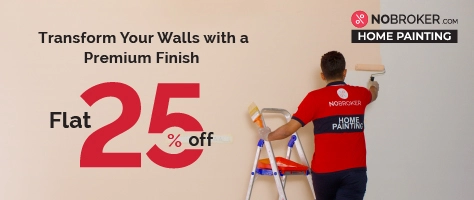I can tell you how to do texture painting. When I decided to do texture painting in my home, I found it to be a fun and rewarding project. Texture painting transforms plain surfaces, enhancing your home's aesthetic appeal. Here is how I approached it.
How to Do Textured Walls
First, I chose the type of texture I wanted, like sponging or rag rolling. I opted for a sponge technique to add a subtle, stylish texture to my walls.
I began by prepping the room. Covered the floors and any furniture with drop cloths to protect them from splatters.
Next, I cleaned and patched any imperfections in the walls. After that, I applied a base coat of paint and let it dry completely.
Once the base coat was dry, I mixed my texture paint. For the sponge technique, I used a sea sponge to apply the paint. I dipped the sponge into the texture paint and patted it onto the walls in a dabbing motion. I worked in small sections to ensure a consistent look and blended the edges as I went to avoid noticeable lines.
I made sure to step back periodically to check the overall appearance and ensure even coverage. After finishing, I let the paint dry completely. The result was a beautifully textured wall that added a unique and elegant touch to my space.
I hope my answer helps you with how do I texture a wall for painting.
Schedule a Doorstep Visit from NoBroker’s Painting Expert and Receive the Lowest Quote for Your Home PaintingRead More
What is texture painting?
Your Feedback Matters! How was this Answer?
Shifting, House?
✔
Lowest Price Quote✔
Safe Relocation✔
Professional Labour✔
Timely Pickup & Delivery
Intercity Shifting-Upto 25% Off
Check Prices

Intracity Shifting-Upto 25% Off
Check Prices

City Tempo-Upto 50% Off
Book Now
There are several ways I can suggest on how to texture paint. The most convenient way is perhaps using a sponge. However, if you are not an expert, you should seek a professional’s help or go for a one wall texture painting service as available on NoBroker like I did. Here are some easy methods you can implement if you want to get it done yourself.
How Do You Paint A Textured Wall?
Texture paint on a wall enhances the overall look of the space. There are many ways to achieve texture paint but here are my suggestions on how to make texture paint on wall,
Texture Sprayer:
Fill the sprayer with a thinned texture compound and then spray the mixture evenly onto the wall. Make sure you hold the sprayer at a distance. Lastly, let it dry, and then paint over it for a professional, textured finish.
Sponge:
First, paint the wall with a base coat. Once dry, use a damp sponge dipped in a different colour to dab the wall. This will create a soft, textured look with varying shades and depths.
Roller:
You can also use a special texture roller with a pattern. Just dip it in a thick texture paint or compound and roll it onto the wall. This method is quick and effective for adding a consistent, decorative texture across the entire wall.
So these are the three easiest ways on how to do texture painting on wall.
Avail Affordable and Professional Texture Painting Services from NoBrokerRead More:
Can texture be applied over paint?
Your Feedback Matters! How was this Answer?
Hi, Buddy
Before knowing how to do texture painting? Let me make you aware about the fact that texturing is a messy process that results in wet texture material flying in all directions by its very nature. Even the most meticulous painter will need to cover the floors and adjacent wall surfaces, including door and window trim, when stippling a ceiling.
Check out NoBroker painting service and give your home a new look. How to do texture paint at home:These are the few guidelines to know about how to do texture paint on wall
- Repair the Damaged Areas
Before you can apply the stipple texture, you may need to correct some wall and ceiling surfaces. Use drywall compound (mud) or lightweight spackle to fill in any holes or chips. Force the compound into the hole with your drywall knife's edge, then smooth the compound across the surface using the knife's edge
- Surface Preparation
Apply a coat of drywall primer or flat white latex paint to the walls. Allow time for it to dry. Because texture paint applied directly to bare drywall would sink into the wall surface, undermining your efforts, this pre-coat is required
- To make the Texture Compound, combine all of the ingredients in a mixing bowl:
By diluting drywall compound with water in a 4:1 ratio, you can make your own low-cost wall texture material. To completely mix the texture compound, use a 5-gallon bucket and a paint mixer attachment on your drill. Blend the ingredients until they resemble thick latex paint. It should be easy to roll on and smooth.
Give your home a makeover. Check out NoBroker Home Interior Services- Roll Out the Wall Texture:
Texturing is a two-step procedure that begins with an initial application and ends with a second rolling over the partially dried material. The most difficult part of the procedure is getting the timing right.
- Using a Brush, Get into Tight Places:
Complete the texturing where the roller cannot reach—corners and edges around woodwork—by applying the material with the flat face of a paintbrush.
- Allow the texture to dry
Allow the texture to dry partially—approximately halfway to complete dryness. Press your thumb into the surface and pull it away to see if it's dry. Sharp spikes, almost like meringue, should result
- Adding a Second Texture
Roll over the surface one more after the applied texture material has attained the required consistency. This will slightly lift the partially dry material, giving it the three-dimensional texture you want
- Make a Surface That Can Be Knocked Down (Optional)
Before the surface is entirely dry, you can smooth a drywall knife across the texture with the tool held at a flat angle to knock down the texture. This significantly flattens the surface's peaks, giving it a textured plaster appearance.
- Make Your Own Texture
If you're using a DIY drywall mud combination to make the texture, let the surfaces dry fully before priming and painting them.
It's usually advisable to hire a painter or decorator to create wall texture if you need to cover a significant area. I hope these steps would help you understand how to do texture painting.
Read More:
What Is Texture Painting? How To Paint A Wall?Your Feedback Matters! How was this Answer?
Leave an answer
You must login or register to add a new answer .
Related Questions
Most Viewed Questions
Recently Published Questions
Authors Of The Question

0 Total Answers










How to Do Texture Painting?
Nirali
399 Views
3
2 Year
2022-02-28T17:15:45+00:00 2022-02-28T18:11:51+00:00Comment
Share